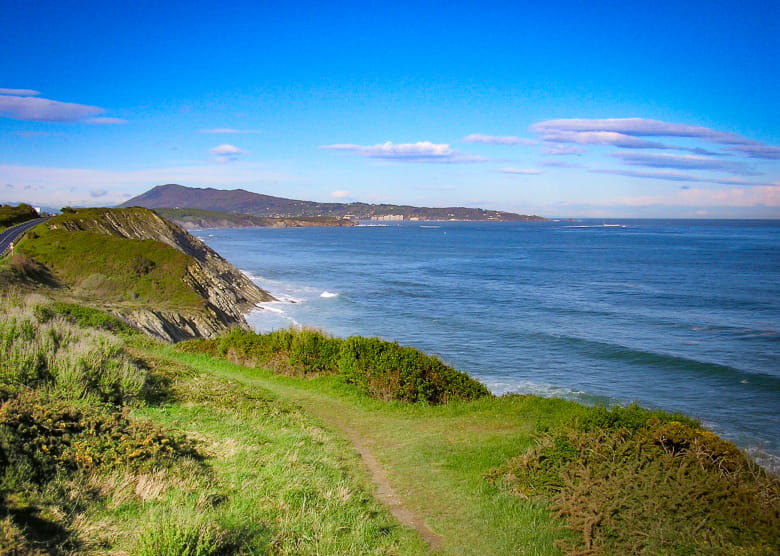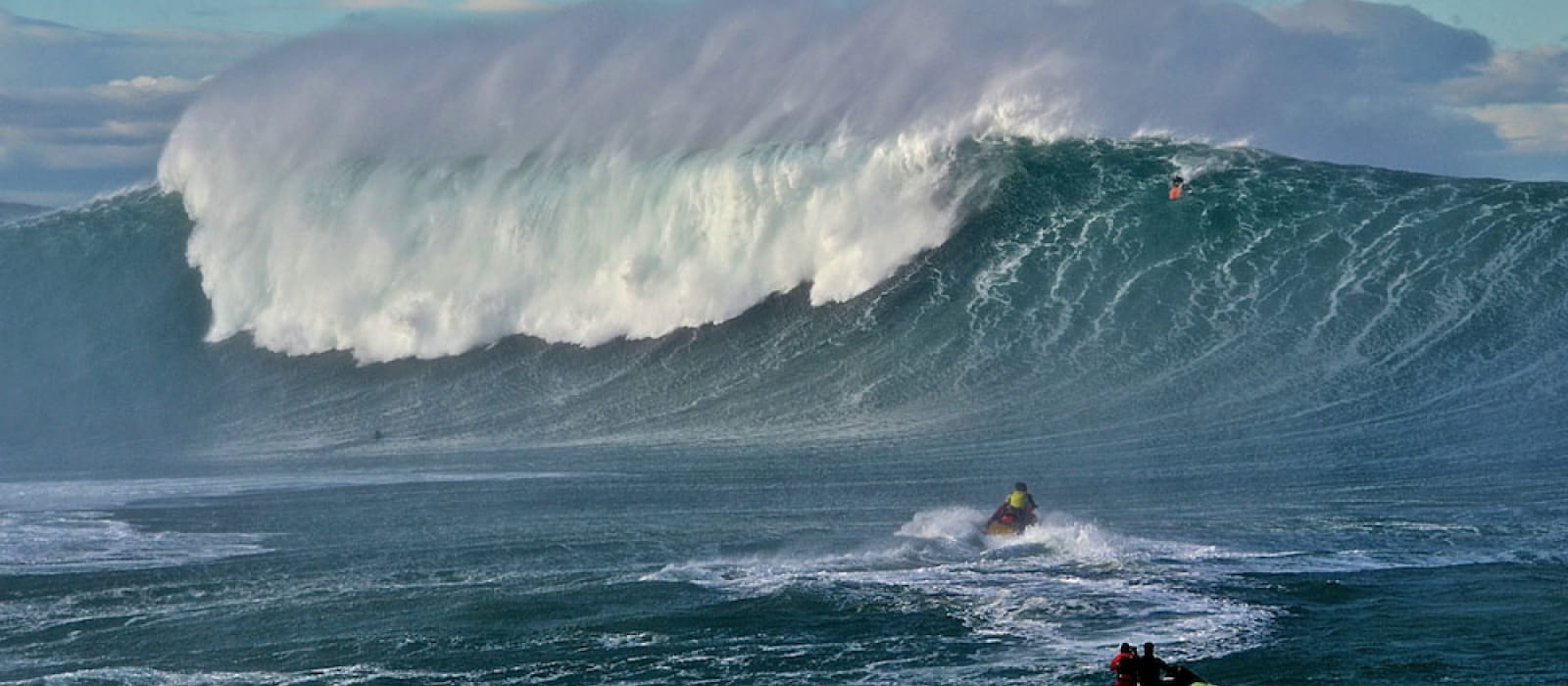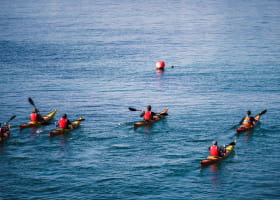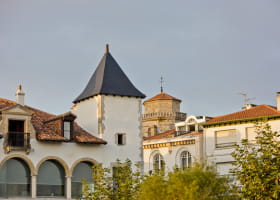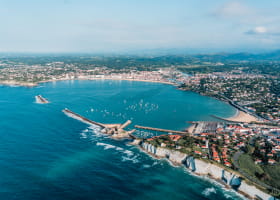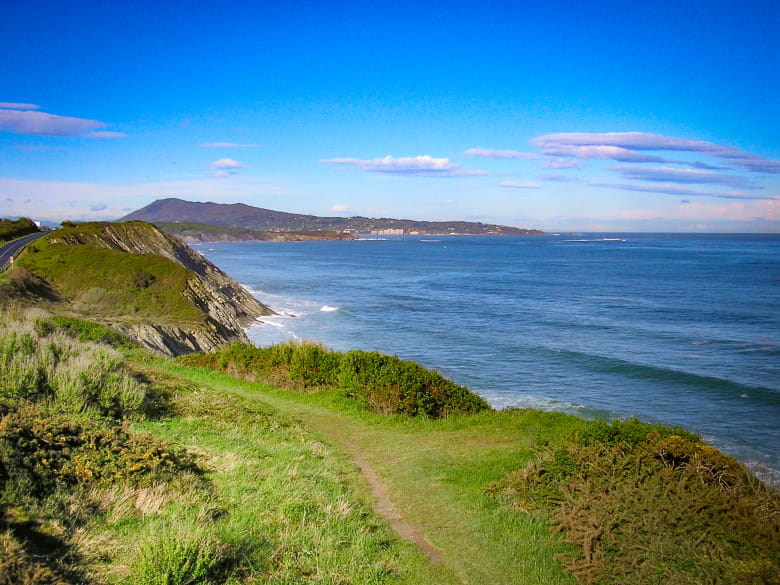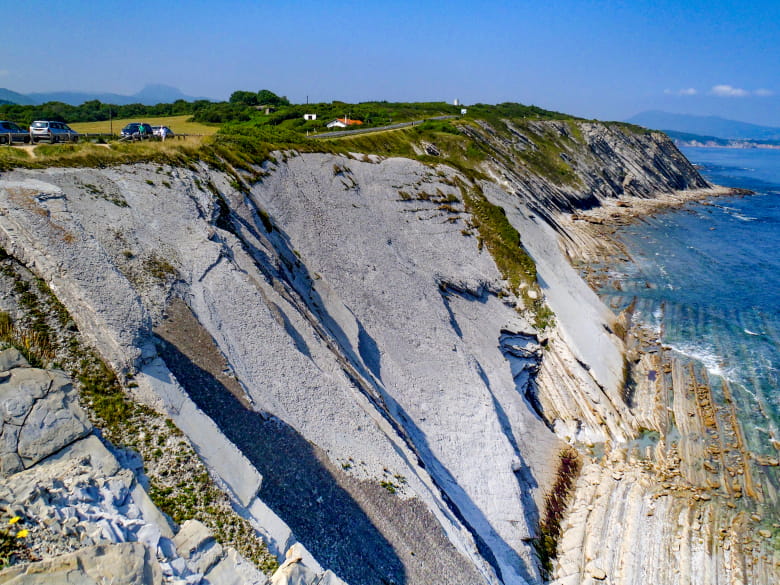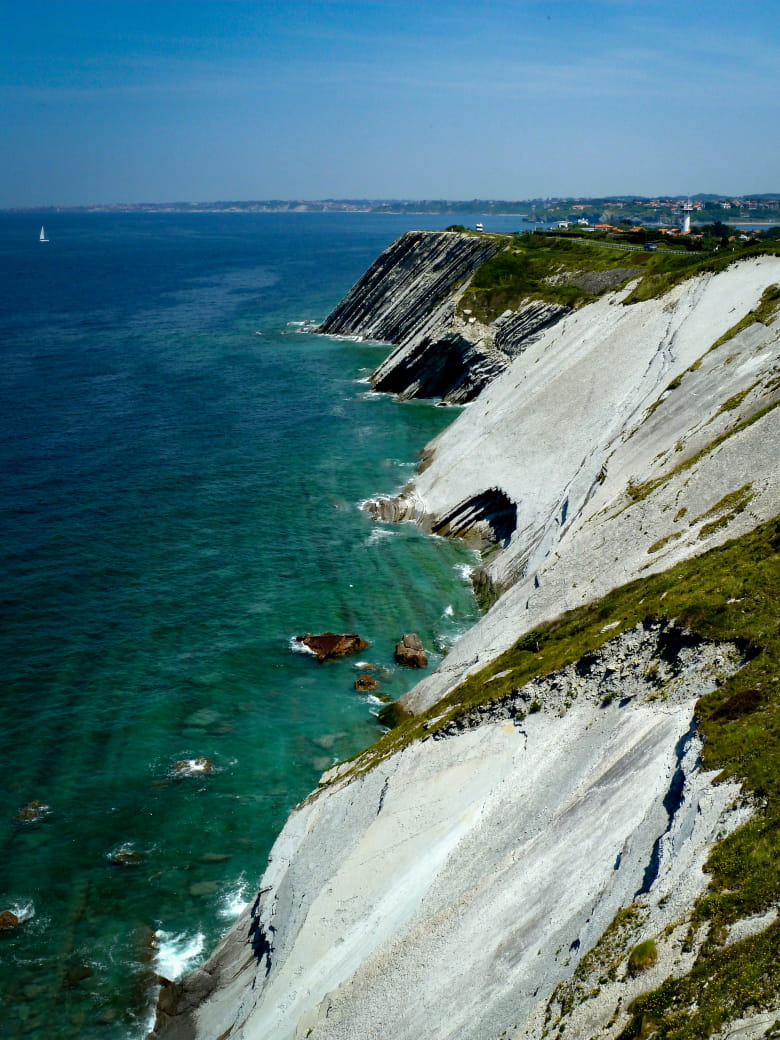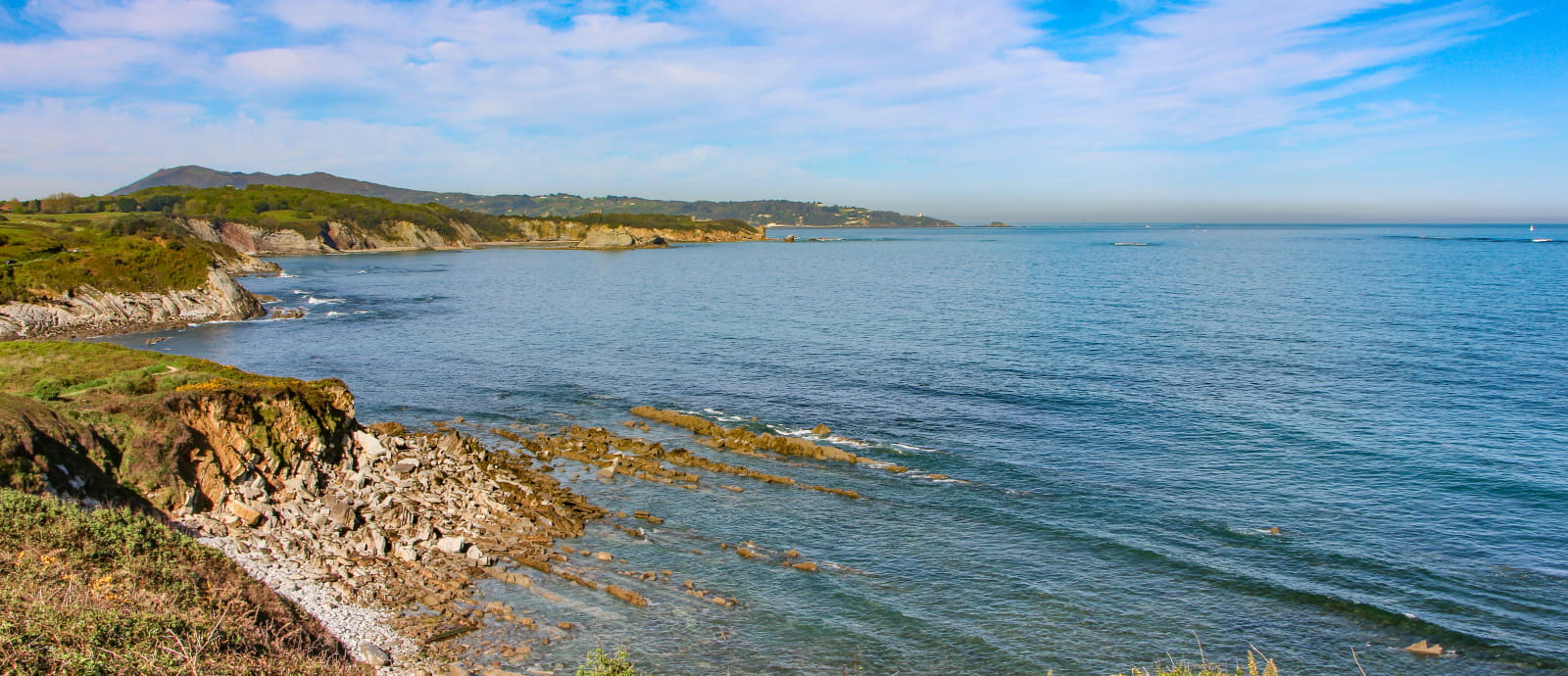
The Basque Corniche
Euskal Erlaitza
The Basque Corniche is a unique natural site.
The Corniche (literally “ledge”) is a ten kilometres long cliff edge going from Ciboure to Hendaye covering a large surface belonging to the town of Urrugne. You can walk along its coastal path over its high flysch cliffs and discover its amazing features. Perhaps you will spot the famous Belharra wave, a giant wave that only professionals are able to surf.
You will also be able to enjoy the magnificent panorama offered by the ocean and discover a wide array of specific fauna and flora.
An exceptional natural area
High flysch cliffs
Where do these high cliffs that border the Corniche come from? They were created 100 million years ago by a geological furrow produced between the Iberian and European blocks that caused underwater avalanches and deposited flysch sediments. Flysch is therefore a sedimentary deposit composed mainly of successive layers of sandstone and marl. It is this alternating phenomenon that gives the appearance of successive strata: harder thicker sandstone layers with more brittle marl wedged between them.
During the creation of the continents, the Iberian block came into contact with the European block and that was when marine sediments emerged to form the Corniche and the Pyrenees.
At their highest point, the cliffs reach a height of 45 metres and offer an infinite view of the ocean
Rich diverse endemic flora

The walking trail is lined with dense flora. There are more than 800 plant species here. This vegetation provides a little protection against erosion. There are well-known species like blue chicory, heather, gorse, tamarisk, bay leaf and even sarsaparilla: the Smurfs’ favourite plant.
Other varieties, of exotic origin, have escaped from gardens and are more harmful and invasive, like pampas grass.
A rural environment

The Basque Corniche is certainly a preserved space on the Basque coast but it is also a rural environment with crops and herds of cows and sheep. But you can see horses too, a golf driving range and recreational activity spots, like the paramotor launching area.
Fishermen also come to the Basque Corniche to collect red seaweed. For this, they use a metal winch used to pull up the red seaweed found at the bottom of the cliffs. It is harvested on the rocks between September and November. The scientific name of red seaweed is Geldium sesquipedale, more commonly known as agar-agar. It is used in the food industry but also in cosmetics for its moisturizing and antioxidant properties. “Sea hay” is harvested on foot or by boat, at low tide. It should be noted that uprooting seaweed from the bottom of the ocean is prohibited; only that brought in by the tide can be harvested.
To see on the Corniche
The coastal path
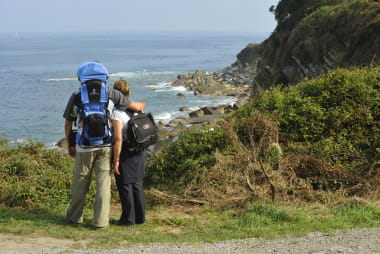
The coastal path runs along the cliffs of the Corniche. For around ten kilometres between the district of Socoa and the town of Hendaye, you can enjoy a panoramic view of the ocean and the waves which crash against the cliffs.
The path is easily accessible but requires suitable footwear.
The coastal path is prohibited to all pedestrians between the exit of the town of Ciboure and the entrance to the Abbadia estate in the town of Hendaye from June 1, 2021 to October 31, 2021.
The Giant Belharra Wave
Egiategia Vineyards
Until the beginning of the 20th century there were vines on the Basque coast, in particular in Anglet in the Chiberta forest and on the Basque Corniche. But they gradually disappeared and it was not until 2009 that Emmanuelle Poirmeur attempted to relaunch this activity 100m above the Basque Corniche. In this area, he discovered perfect soil composed of all the necessary elements, cradled by a gentle sea wind and a suitable temperature. It reminded him of Italian coastal hillsides.
Here, he planted 5 acres of Chardonnay so as to produce a great white wine. Committed to respecting the land and the vines, Emmanuel advocates a hands-off approach. He prefers the use of eco-friendly methods: wooden stakes, excessive grassing, no trimming or stripping, winter maintenance, natural enrichment of the soil by a flock of ewes, and natural spontaneous protection of the vines by the permanent presence of sea winds and iodized ocean spray…
This totally manual work, in harmony with the environment, enables him to produce an exceptional white wine: Erlaitza.
To find out more about this production and also about his experiments with underwater vinification in the Saint-Jean-de-Luz/Ciboure bay, visit the Egiategia wine cellar in Socoa.



